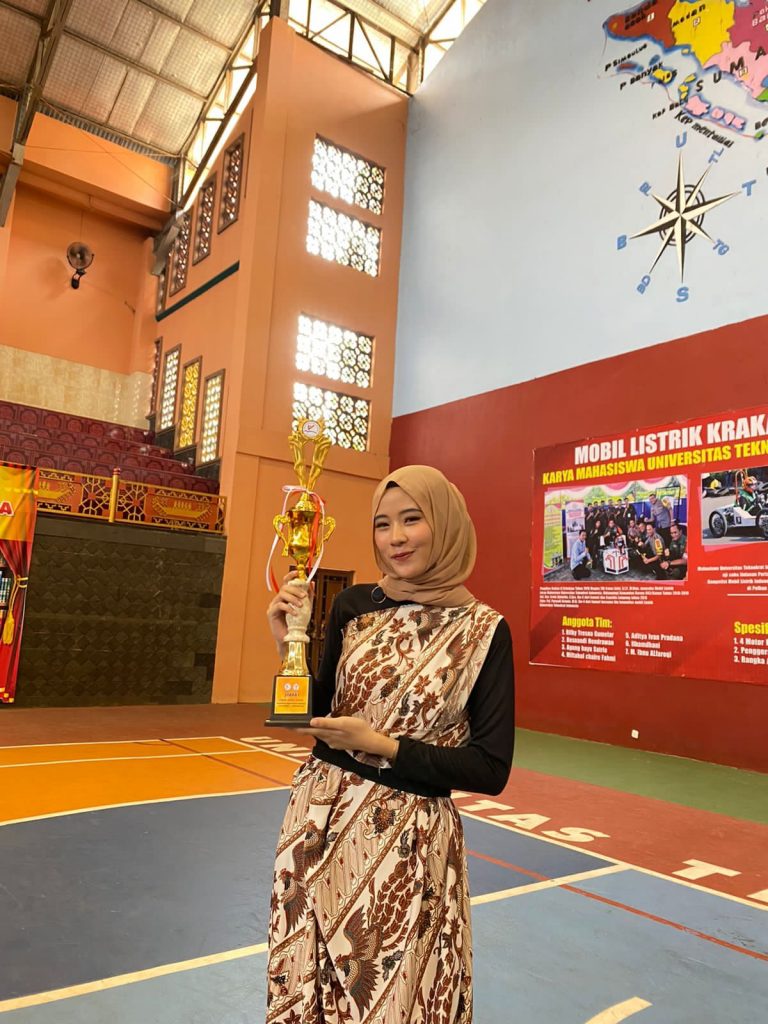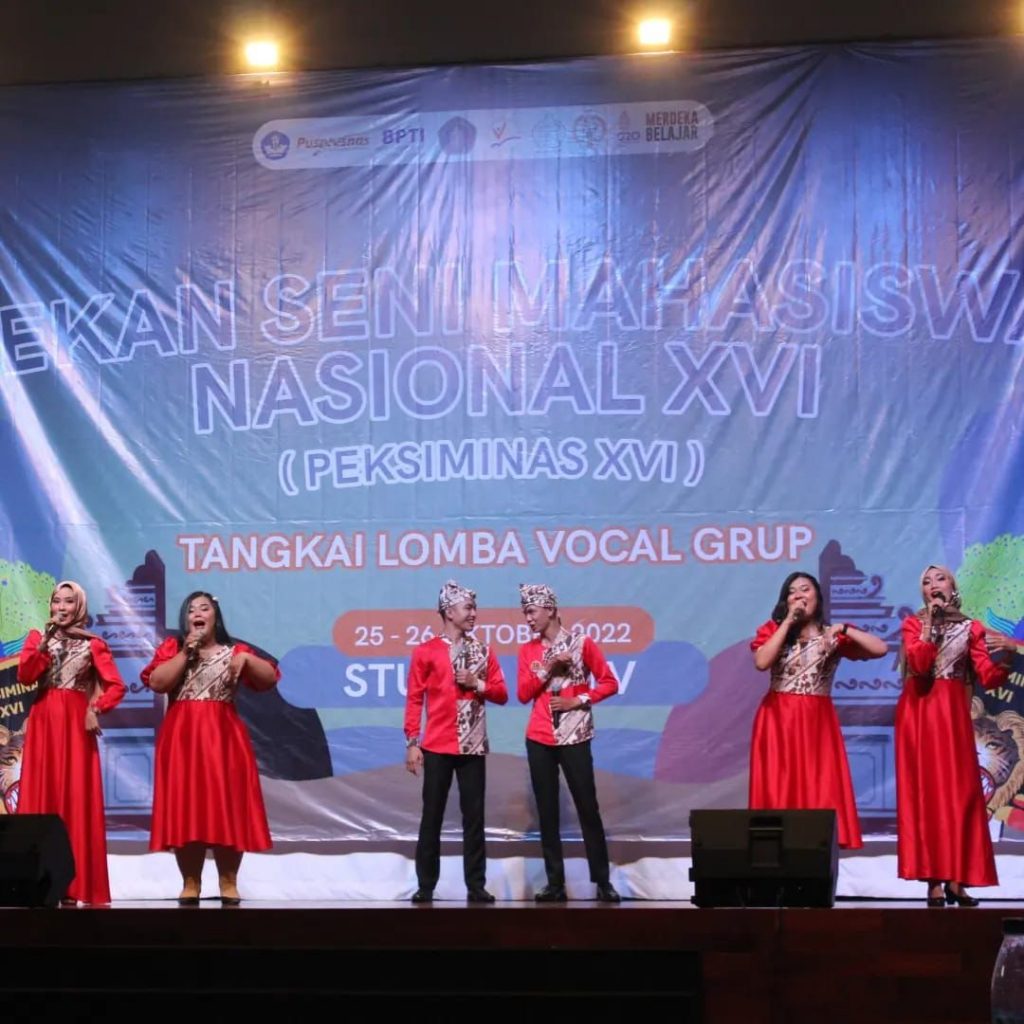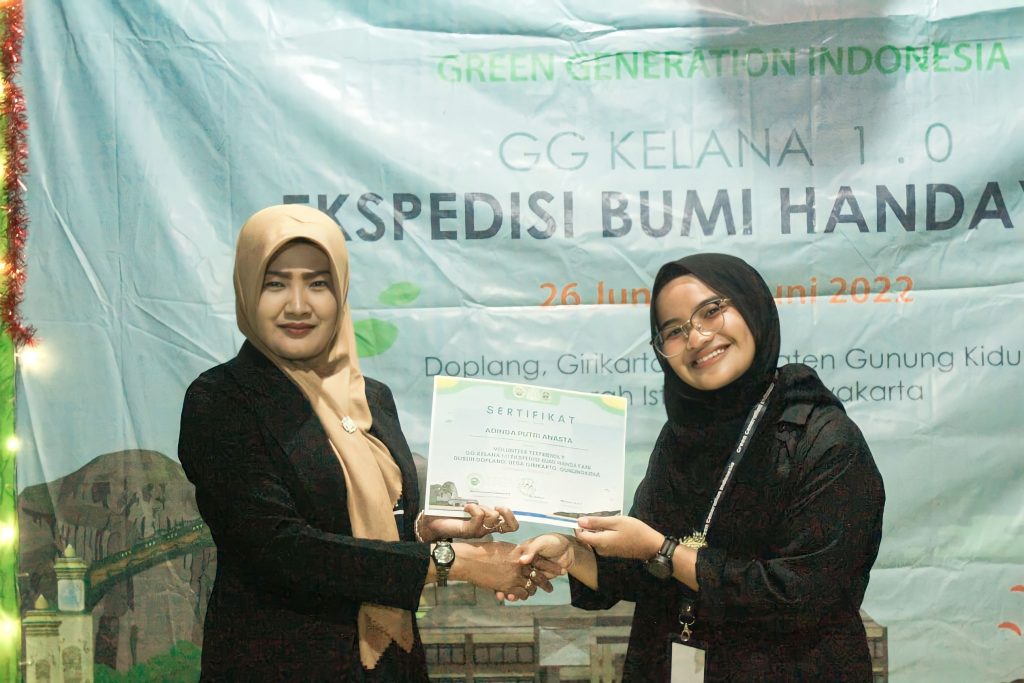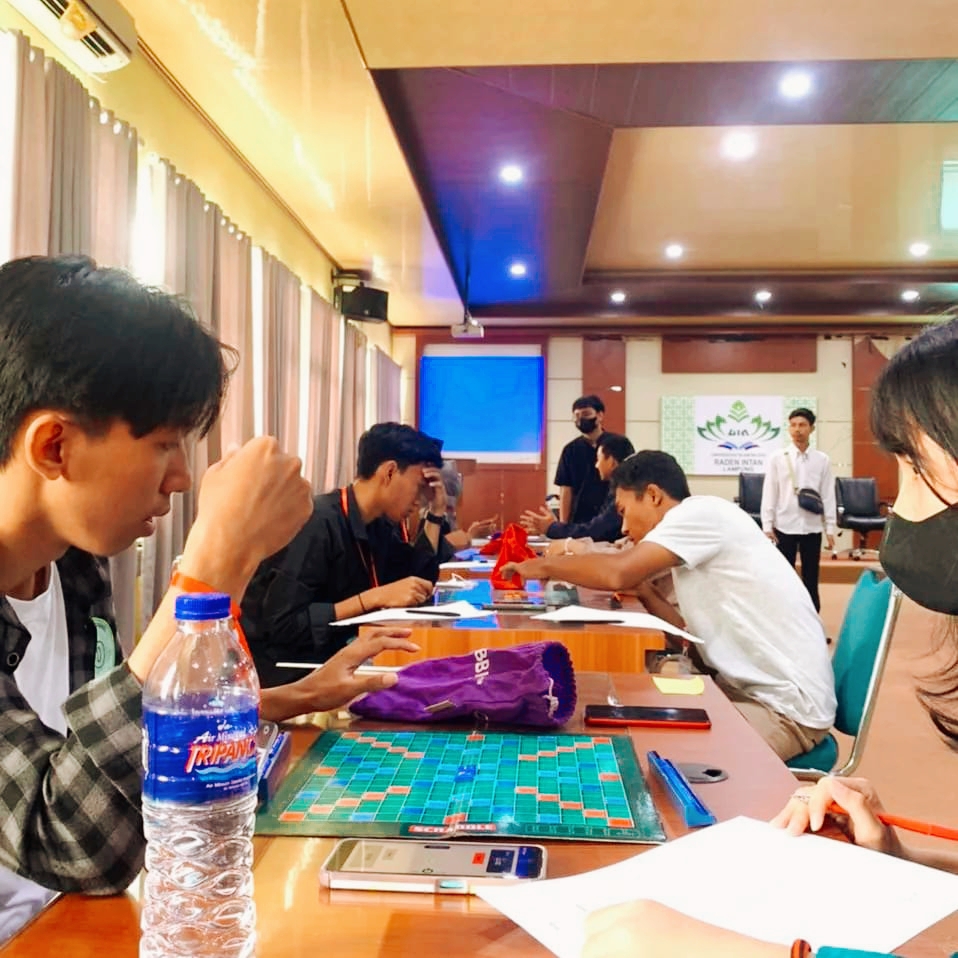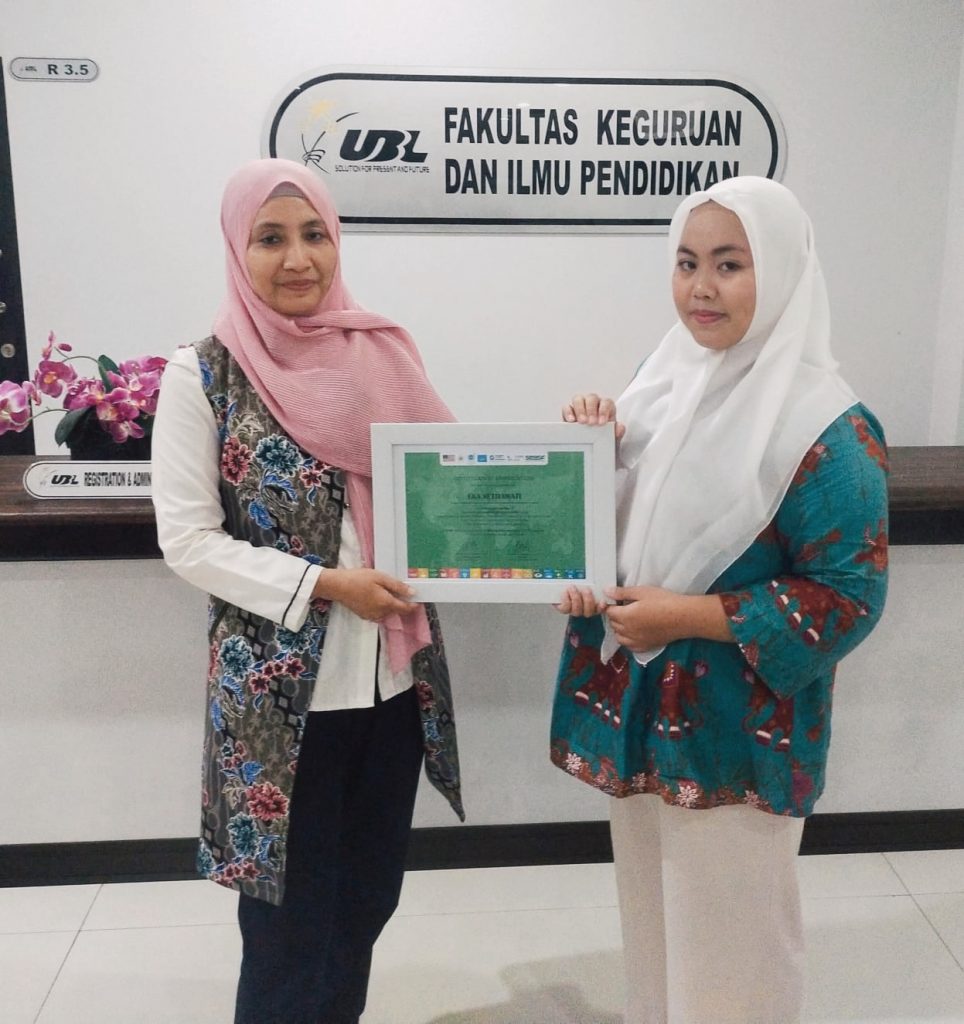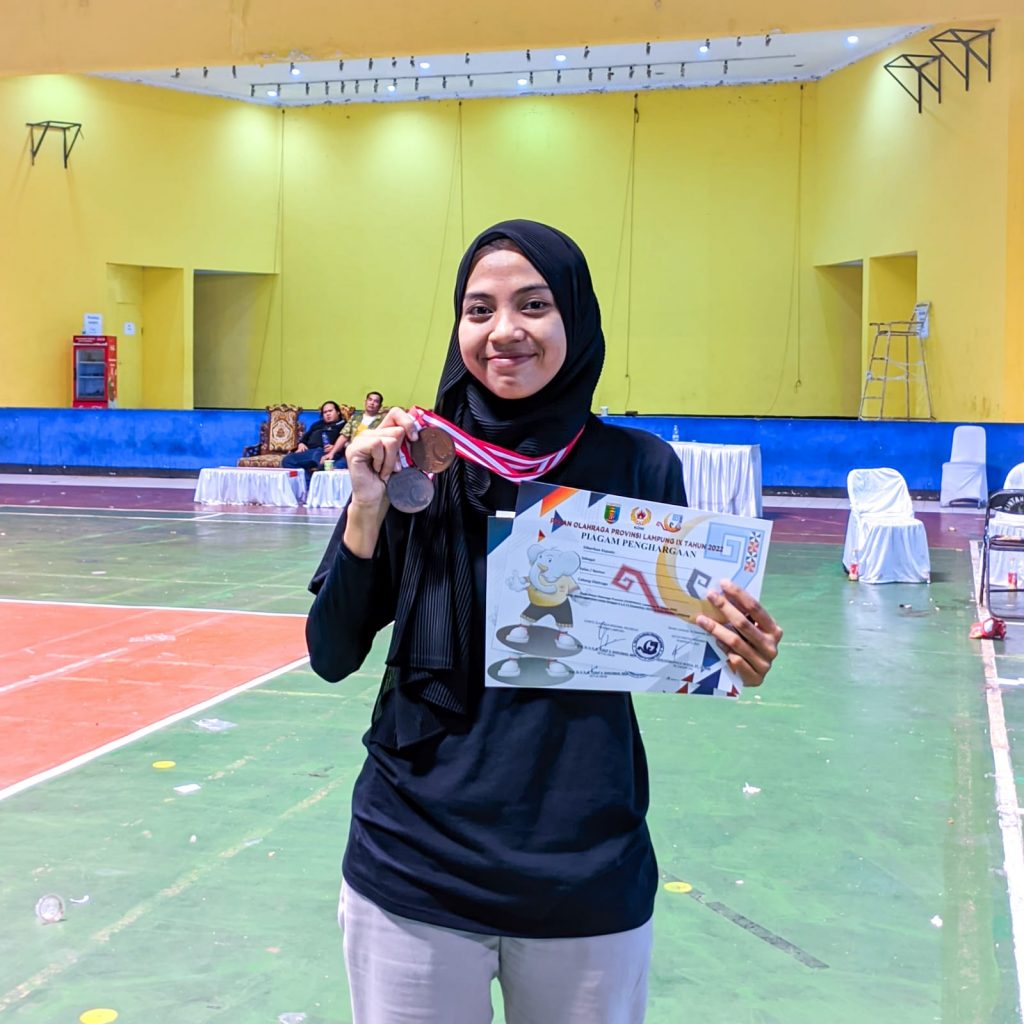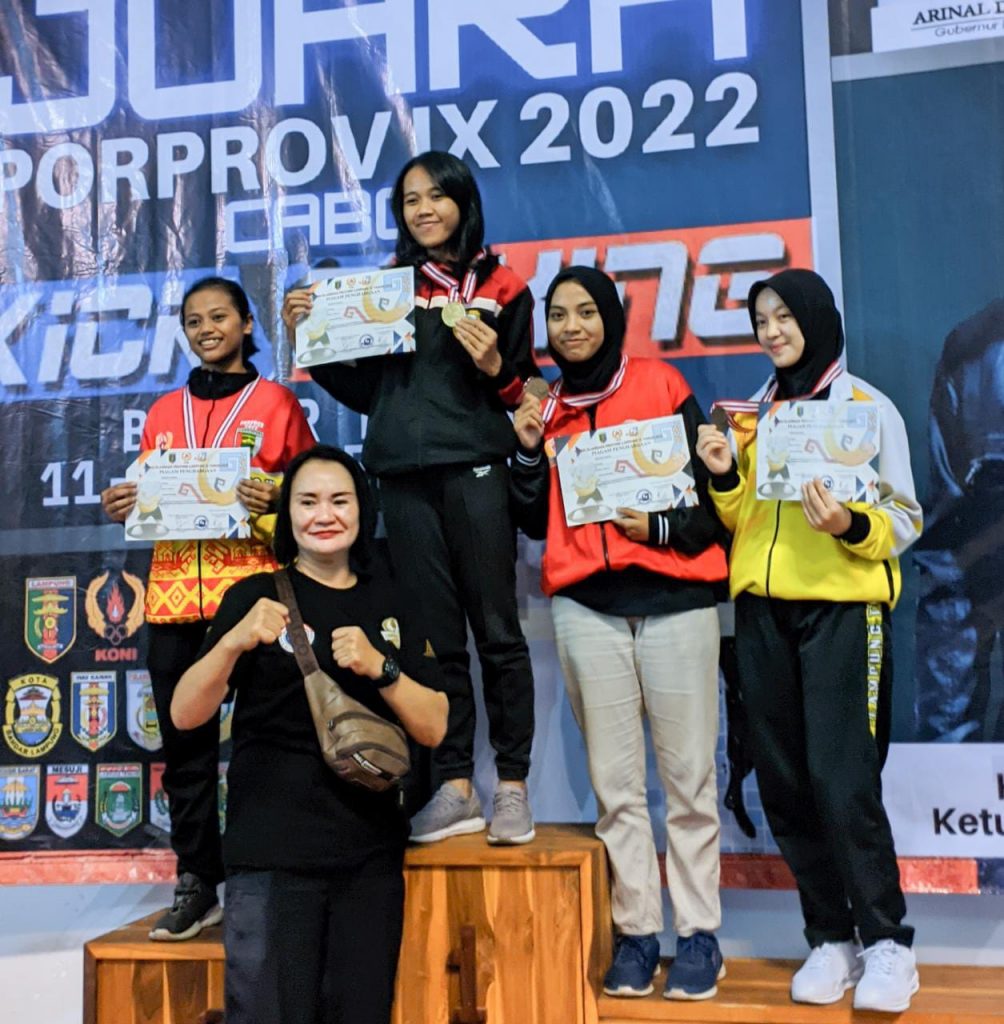CHAPTER I
REQUIREMENTS, PROCEDURES, AND THE IMPLEMENTATION OF THESIS GUIDANCE
The Requirements of Thesis Title Submission
- Have completed the curriculum with minimum requirements of 144 credits
- Have passed the courses of Research Methodology with a minimum value of C.
1.1.2 Administrative Requirements
- having a card identifying a thesis guidance
- Enrolled as a student at the time of counseling
1.1.3 Already have read and understood the Thesis guidebook of Teacher Training and Education Faculty of UBL
1.2 The Procedures of Thesis Title Submission
The Thesis Title Submission procedures are as follows:
Before submitting a thesis title, students must complete the academic and administrative requirements.
- Before submitting a title, students can do some preliminary research (pre – research) if necessary.
- Students apply for the approval of the title in the following ways
- Filling out the form of Proposed Thesis Title to the head of study program.
- Based on the evaluation, the head of study program issued a proposed thesis title that is approved by the Supervisor Commission.
- Fields of study that can be examined are all things associated with English language and the teaching.
- Students request for the schedule form / card of the thesis guidance to the head of study program.
- Afterone of the alternate titles is approved by the head of study program, students mustprepare and submit the research proposals in accordance with the approved title to the Supervisor.
1.3 The Implementation of Thesis Guidance
1.3.1 General Provisions
- Thesis writing performed by students is under guidance of faculty supervisor. Supervisors consist of the first supervisor and the second supervisor. The first supervisor has the ultimate authority in all matters dealing with the counseling process including the authority to change the title if necessary. The second supervisor assists the first supervisor in implementing the guidance.
- The first supervisors are lecturers who fulfill the following requirements:
- Educated scholar Strata II (S2) and have achieved academic hierarchy as low as expert assistant and have served on UBL at least 1 (one) year or,
- Educated scholar Strata III (S3) and have achieved academic hierarchy as low as expert assistant and have served on UBL at least 1 (one) year.
- The first supervisors are lecturers who fulfill the following requirements:
- Educated scholar Strata II (S2) and have achieved academic hierarchy as low as expert assistant and have served on UBL at least 1 (one) year or,
- Educated scholar Strata III (S3) and have achieved academic hierarchy as low as expert assistant and have served on UBL at least 1 (one) year.
- The supervisor has a relevant skill with a problem / topic of the thesis written by the students supervised.
- The Implementation of thesis guidance is done at least eight (8) times of the intensive consultation with the supervisors.
- The Implementation of thesis guidance is stated complete after the first supervisor gives an approval to be published / printed.
- The Implementation of thesis guidance must be completed no later than 365 days (one year) from the date of the enactment of the thesis title approved by the Supervisor along with the head of study program. Students failed to complete the writing in this period will be subject to sanctions by the rules set by the head of study program.
- Students are not allowed to change the supervisors without the consent of the head of study program.
- Supervising faculty members who are for some reasons are unable to remain andto provide further guidance shall notify in writing to the head of study program.
- The supervisors who are legally and convincingly proven to be the cause of a student that cannot meet the requirements in point (e) will be reprimanded, warned, or replaced with other supervisorscommission by the head of studyprogram.
- The Supervisorshave a right to refuse the designation in consideration of science specialties practiced.
1.3.2 The Implementation Procedures of Thesis Guidance
The Implementation procedures guidance is set as follows:
- After obtaining a title approval and a thesis supervisor from the head of study program, students shall see the first supervisor for instructions and/or direction on the implementation of a guidance. Students must show the title approval letter and the supervisor determination, research proposal, and the schedule form / the card of thesis guidance.
- If based on the guidance of the first supervisor students have to do major changes to the title and or the object of research, students must report the change to the head of study program.
- If the title of the research is approved by the first supervisor, the process of the implementation of research proposals is submitted to the second supervisor at the direction of the first supervisor.
- The research proposals that have been approved by the second supervisor are handed back to the first supervisor for review and approval from the first supervisor. Once the research proposal is approved by the first supervisor, studentsare allowed continuing the next guidance of the thesis material.
- For further thesis material guidance process, students must first consult to the second supervisor. Once the material is approved by the second thesis supervisor, then students must consult to the main supervisor.
- In each consultation to the faculty supervisor, students must carry the card / the schedule of the thesis guidance. The supervisor testifies the result of his guidance and his signature on the card / the schedule of the thesis guidance.
- The thesis is declared ready to be tested once it had obtained an approval from the supervisor.
- Furthermore students have to bring the card / the schedule of the thesis guidance to the head of study program for approval.
CHAPTER II
SYSTEMATICS OF WRITING AND CONTENTS OF PROPOSAL
2.1 Systematics of Proposal Writing
Systematics of proposal writing is as follows:
The page of Research title
Research title (is re-written on the first page of the contents of the proposal)
- Introduction
1.1 . Background Research
1.2 .Problem Formulation
1.3 . Research Objectives
1.4 .Hypothesis
II . Theoretical framework
III . Research Methods
3.1 Research Variables
3.2 Variable Definition and Measurement
3.3 Types and Sources of Data
3.4 Population and Sampling
3.5 Data Collection Techniques
3.6 Method of Analysis
Bibliography
2.2 Proposal Contents
2.2.1. The Page of Research Title
The Research title page contains: a title, an author name, an NPM, a Study Program, a Faculty, a University name, and the year of proposal writing.
2.2.2. Research Title
The title of the research should have the following principals:
- Clearin meaning, it means that it shows clearly and unequivocally on the relationship between variables (modifiers) that are studied and are able to describe the core of the research.
- Complete, it means that it describes all variables studied as well as the object and the location of the research.
- Informative, it means that it is easily understood by every reader, and it is unambiguous.
- Short, it means avoiding the use of unnecessary words.
2.2.3. Preliminary
- Background of the problem
The nature of the background is to show / explain / describe the importance of variables examined in the context of the research object.
The content of the background:
- A general description on the importance of the research in the context of the specific scientific study field (specialization).
- A description on the importance of the variables studied.
- Data / information / conditions / facts about the variables studied on the object under study to be delivered on an issue.
- problem Formulation
Contents: an inventory of problems associated with the study variables on the object under study. Based on the results of the inventory, the problem is formulated in a question form (?).
- Research Objectives
The Research objectives should be formulated with reference to the problems that have been formulated.
The content of the research objectives:
- To determine the condition of existing variables on the object of the research (descriptive).
- To determine the relationship (the influence, the roles, the relationships, and so on).
- To determine the alternative solutions on the object of the research.
- To determine the steps problem solutions.
- hypothesis
A Hypothesis is a temporary answer to the problems that have been formulated. It serves as a guide to provide direction and guidance for the research to be conducted.
Formulation of hypotheses should refer to issues that have been formulated and the research objectives that have been determined and shall be based on a theoretical framework that has been presented.
2.2.4. Theoretical framework
The basic of theoretical framework:
A Theoretical framework should be prepared based on or refer to theories that correspond to areas of study researched and or refer to the relevant research result and ever performed or observed by others.
The content of a theoretical framework:
- Theoretical framework must include and demonstrate linkage variables to be studied completely and logically and it is possible to have dummy variables to clarify the relationship of variables to be studied so that the justification can be accounted for.
- To give clarity to the parties concerned in explaining the idea of linkage research variables that are described in a diagram (figure) systematically.
2.2.5. Research Methods
- At the beginning of the making of the method of the research, the research methods that need to be used are described (e.g. census methods, case studies, sampling, etc.) and the type of research that will be selected (e.g.library research and field research) including the explanation of why this kind of research method is used. This research method section contains sub-sections as follows:
- Research Variables
Contents of variables:
- Determine the number of research variables and classify them into groups of independent variable and dependent variable. If there is any intervening variable, it has to be incorporated into the analysis model. The independent variable is declared with the notation X, and if there is more than one variable, it is denoted by X1, X2, … , Xn. Related variables are declared with the notation Y, and the intervening variable is declared with a notation I.
- Variable Definition and Measurement
This sub-section is to provide a clear operational definition of each variable of the research and to define the variable indicator and its unit size.
- Types and Sources of Funds
This sub-section mentions and describes the type of data and the source of primary and secondary data acquisition.
- Population and Sampling
- Mentioning the overall population members of the research object and determining the size of the population. If the research is a census research, it is not necessary to use sampling.
- Describing the sampling technique used and determining the part of the population used as a research sample. This is used when the research that is conducted is research sampling
- Data Collection Techniques
Mentioning and explaining the data collection techniques used to obtain data that can be accounted for. Data collection techniques are observation, interviews, documentations, and questionnaires.
- Method of Analysis
It mentions the analytical methods to be used, qualitative and quantitative methods.
- Qualitative Methodsexplicitly mention the basics of the appropriate theory according to the study variables as a basis for analyzing (assessing and exploring the relationship between variables) on phenomena or symptoms that occur in objects of research so as to obtain the desired response by the research objectives.
- Quantitative Methods
- Mentioning and explaining completely, in detail, and systematically the design of analysis model that will be used for the research of hypothesis testing.
- Explaining the quantitative techniques (scoring) of qualitative data regularly and consistently.
- Stating the statistical hypothesis testing tool used and formulate statistical hypotheses (Ho and Ha) as well as explaining the criteria of the examiners.
2.2.6. Thesis Systematics
Outlining the design of the thesis content that will be compiled in a report of the research that has been conducted shall be conducted. This systematic is divided into 5 chapters into which:
Chapter I: The Introduction contains the background, the identification of problems and issues, and the research objectives, the theoretical framework, the hypothesis, the research methods, and the systematic thesis.
Chapter II: The theoretical foundation contains theories about the understanding the major field of study and the variables to be studied, theories explaining the relationship between variables and theories supporting the research.
Chapter III:The presentation of data contains the development of the research object, the conditions of the object of study especially with regard to the problems studied.
Chapter IV: The analysis of the data contains analysis methods used along some necessary explanations.
Chapter V:The conclusions and suggestions contain the formulation of conclusions on the basis of the research results and provide some suggestions with regard to the conclusions.
2.2.7. Bibliography
In this proposal it must be accompanied by a plan of references that will be used.
2.2.8. List of Questions
In this proposal it should also be equipped with a list of questions / questionnaires / questionnaire or interview guidance.
CHAPTER III
SYSTEMATICS OF CONTENTS AND
ThesisWRITING TECHNIques
3.1 Systematics of thesis writing
The systematicsof a thesis contains the following:
- Page introduction that comprises of:
- Title page
- Supervisor approval page
- The page of approval of test team
- Thesis abstract
- The Page of CV
- The page of dedication
- The page of Motto
- Preface
- Table of Contents
- List of Tables
- List of Figures
- List of Appendices
- The thesis core consists of:
Chapter I: Introduction
1.1 Background
1.2 Identification of Problem and Problems
1.3 The Benefits and Research Objectives
1.3.1 Research Objectives
1.3.2 Benefits of the Research
1.4 Theoretical Framework
1.5 Hypothesis
1.6 Research Methods
1.6.1 Research Variables
1.6.2 Variable Definition and Measurement
1.6.3 Types and Sources of Data
1.6.4 Population and Sampling
1.6.5 Data Collection Techniques
1.6.6 Method of Analysis
Chapter II: Theoretical Foundation
2.1 The definition, the restriction of the details being studied (according to the science / specializations studied)
2.2 Definition of limits and details of study variables (in accordance with variables used in the study)
2.3 Links betweenstudy variables
Chapter III: Data Presentation
3.1 History of Research Sources
3.2 Presentation of Secondary Data
3.3 Presentation of Primary Data
Chapter IV: Data analysis
4.1 Quantitative Analysis
4.2 Qualitative Analysis
Chapter V: Conclusions and Suggestions
5.1 Conclusion
5.2 Suggestions
3.1.1 Thesis Content
- page of Introduction
The page of introduction consists of a title page, advisors approval page, approval page, thesis abstract, curriculum vitae, dedication page, motto page, preface, list of tables, list of pictures, and list of appendices.
The content of each section of the page is the following introduction:
- The title page contains the following: thesis title, student name, Student number (NPM), symbol of UBL, University name, and the ratification of the thesis.
- The thesis approval page contains: thesis title, student name, Student number (NPM), study program, faculty, specialization, names of supervising committee, and the name of the head of study program.
- The approval page contains: names of the test team, dean’s name, and date of graduation.
- The contents and thesis abstract writing techniques are discussed in chapter 4 in this manual.
- Memoir contains: place and date of birth, name of parents or family, and history of education of the writer.
- Tribute Page contains: The dedication addressed to the parties seems necessary for the thesis writer.
- Motto Page contains: a motto of live of the writer for a maximum of 3.
- The preface contains:
- Acknowledgement
- Thanks are addressed to specific parties, among others: The head of the Foundation, The Rector, The Dean, The Head of Study Program, The Commission Counselor, and The Head of Research Object.
- Closing remarks.
- Place, date, month, and year of making.
- Table of contents includes systematics of the thesis (introduction page and the content of the thesis) and the page number.
- List of tables containingthe number of table, the table title, and the page number.
- List of figures contains the number of image, the image title, and the page number.
- Appendix contains number of attachment, text of attachment, and the page of attachment.
- The thesis core
Chapter I: Introduction
Fill in the subs of the introductory of chapter Isimilar with the contents of the corresponding parts of the proposal. Example: the sub-section of 1.1 the background of the first introductory chapter is the same with part 1 of the proposal background and so on.
Chapter II Theoretical Foundation
This chapter consists of several sub-chapters with varied numbers according to the terms and scopes of the investigated areas of scientific study. The sub- section is to be stated as follows:
- Definition and restrictions as well as other explanations are considered necessary in the main study areas that are investigated. For example: the field of science studies examined is on The Listening Activity that Affects Students’ Understanding in English, so the sub-chapter should present the definition and limitation of The Listening Activity, The Listening Activity functions, and so on.
- Definition and constraints of research variables theoretically with the explanation of the variables in detail.For example: If the research that is conducted is examining on variables of work motivation and job performance, it needs to be presented in sub-chapter about the understanding of work motivation, principles of motivation, types of motivation, understanding and constraints of work performance, the factors that affect job performance, and other details about the motivation and job performance.
- Links between the studied variables either directly or indirectly theoretically. For example: the relationship of work performance with motivation, the role of material and non- material motivation to improve employee’s motivation, theory about the motive achievement by McClelland, Herberg motivation theory, and so on.
Chapter III: Data Presentation
This Chapter Contains data on:
- General description of the object of study.It can be presented into sub chapters which essentially provide a general description of the object under study. For example: The history and development of the research object, the organizational structure of the research object, business and activities of research objects, and so on.
- If the research is conducted using secondary data, the secondary data must be presented intothe sub-section corresponding to the number of variables examined. For example: Research is conducted using two variables, work motivation and job performance. It means that it needs to present data on work motivation and data on work performance.
- If the research is conducted using primary data, it is necessary to present the primary data in the form of data ready for analysis after processing.
Chapter IV: Data Analysis
In this chapter there are two possible alternatives of analysis used, the alternative qualitative alone or a quantitative analysis and a qualitative analysis that are appropriate to the methods of analysis that have been specified in the methods of analysis in Chapter I.
When the first alternative is used, the presentation is not divided into sub-sections, but the contents of the sub-sections should be presented systematically based on the theoretical foundation which has been determined with the discussion completely that leads to the achievement of the research objectives.
Quantitative analysis testing is done through the following steps:
- Describing the data to be analyzed based on the needs of analysis model used.
- Using the model in the form of calculation orderly to obtain the coefficient value.
- Consulting the coefficient valueswith the statistical valuesfor a statistical hypothesis testing (if it is used).
- Explaining the meaning of the coefficient values and its interpretation.
- Providing the application of the interpretation of the relationship between the variables studied (implementation of interpretation).
Tests of qualitative analyses are conducted through the following steps:
- to describe the conditions of the studied variables such as tendencies and or symptoms that occur on the object of the research in accordance with the data that have been presented in chapter III
- to express the basic reviews of the theory based on the theoretical foundation of chapter II that becomes the reference in the analysis that shows the relationship directly or indirectly between studied variables.
- to analyze the existing variables research condition on the object that has been designed.
- to present the discussion of the analysis results and its implementation in accordance with the research objectives.
Chapter V: Conclusions and Recommendations
- a) Conclusion
- In the sub-section of the conclusions several pointsof conclusions that are essentially to meet the research objectives are presented.
- The conclusions should be based on the analysis result and discussion in chapter IV.
- The materials on conclusions are clearly and concisely formulated containing conditions of the study variables on the object of the research, the relationship between the study variables (the relationship, the influence, or the role), and a discussion of the results of hypothesis testing.
- Suggestions
- In the sub-section of suggestions some pointsof suggestions as alternative implementations for the benefit of both the object of the research and for the development of science are presented.
- The suggestion should be based on the conclusions that have been formulated in the sub-section of conclusion chapter.
- Suggestions materialsare formulated clearly and concisely as well as operational which contains alternative solutions on the object of the research.
3.1.2 Thesis Writing Techniques
Provisions of thesis writing techniquesare classified into two parts, general provisions and special provisions.
3.1.2.1 General Provisions
- paper
Paper used to present the thesis is distinguished between the paper for the cover and the paper for the content (text) of the thesis.
- The cover of the thesis that is ready to be tested uses a gray “buffalo” paper. The cover for a thesis that has been tested and declared passed uses the material of gray “hard cover”.
- The paper size for a thesis is A4 (80 grams) or 21.0cm x 29.7 cm.
- typing
- tool
Thesis writing must be done using computer or printed.
- Letter
The font is “pica” and the font size is 12 for all letters except the thesis title on the cover, which is bigger (16), and subscript and superscript which is 10.
The space for the body of thesis is 2 (double space), and the space for the abstract and bibliography is 1 (single space). There is a bigger space, however, between entries in the bibliography.
Write-off and blackening the wrong part is not allowed, the removal must be clean and perfect.
- Margin ( border )
- Writing introductory page borders are determined as follows:
Top = 5 cm
Bottom = 4 cm
Left = 4 cm
Right = 3 cm
Footer =
- Border writing the text content is determined as follows:
Top = 4 cm
Bottom = 4 cm
Left = 4 cm
Right = 3 cm
iii. Space
The writing of all texts in general should use double spacing. Single space is used for writing the title of the table, title image, abstract, direct quotes, and sources of literature on bibliography.
- Identity
The paragraph writing should begin from the left margin, not indented. The next sentences in the same paragraph should not be begun on a new line.
- Language
The thesis shall use StandardEnglish with correct structures based on the general guidelines. English Spelling and English sentences are arranged in a good way and in a correct way.
- Multiplication
Multiplication can be done by copying using specified ink and paper. The thesis that is ready to be tested is multiplied by 2 copies (1 printed + 1 CD).
The passed thesis is duplicated by 1 copy and 1 copy in CD (Compact Disc) which are allocated to:
3.1.2.2 Special Provisions
- numbering
- page numbering
Page numbering is done by the following conditions:
- The numbering in the introductory page uses small Roman numerals (i, ii, iii, and so on) that are placed in the middle of the lower margin.
- The numbering of pages in the body of the thesis, a bibliography and appendices, uses Latin numerals, and they are placed in the upper right, two spaces above the upper margin and 3 cm from the top right edge on the page containing the main title (chapter). The page numbers are listed in the middle, two spaces below the bottom margin.
- Numbering
- a) The numbering of chapters uses roman numerals (Chapter I, Chapter II, and so on).
- b) The numbering of sub-chapters and sub-section of chapters follows the following pattern:
I.
I.I
I.I.I
I.I.I.I
I.I.I.II
The numbering to declare the lower division (five points) should use Latinnumerals followed by the closing parenthesis. For example 1), 2), ………., and so on. For the next lower division (six numbers) the numbering should use Latinnumerals in parentheses. For example: (2),(3),………., and so on.
- Numbering of tables, images, and appendices
Tables, images, and appendices are given the sequence number using Latin numerals.
For example:
Table 1 . …………………….. Table 2 ………………………..onwards
Figure 1 ……………………… Figure 2 ……………………. and so on
Appendix 1 ………………… Appendix 2 …………………..and so on
d .The numbering for the distribution of non-sub-section (for instance details of a theory) should use lowercase letters of Latin. For example: a., b., …….,and so on. If the details require further details, the writing of the details is as follows: a), b), ………., and so on, and if you still need more details, then the writing is: (a), (b), …….., and so on.
- Citation
- Citation consists of two forms, direct citation and indirect citation.
Direct citations are taking an idea / notion / understanding of the full written sources without changing the shape and editorial.
Indirect citations are taking the essence of the idea / notion / understanding or taking an idea / notion / understanding that are expressed in a different editor.
- Writing a direct citation is set as follows:
- a) If the citation consists of at most three lines, then place it as part of the sentence in the text between the two quotation marks written in double space (two spaces).
Example:In quotingthe terms of office specification, then the writing is:
………………………. positionspecification is prepared. “Position specification is a description of the minimum requirements of office personnel to be able to hold a certain position, so that he can work effectively”.
- b) If the citation is more than three lines, then place it between quotation marks below the last two lines of the sentence that precedesit, indented five letters of the left margin in single-spaced typing.
example :
…………….. differentiate the definition of organization in two terms, namely in terms of a dynamic organization and the organization in a static sense.
” Organizations in the dynamic sense is a process of defining and sharing the work to be done, limiting the duties or responsibilities and authority and the determination of the relationships between the elements of the organization, thus enabling people to work together as effectively as possible to achieve the goal.
The writing the above citation should be accompanied by a set of writing citation source on the following points:
- c) Writing a citation source
Writing a citation source is set as follows:
- a) The Source of citations must be in order: author’s name (the title), coma, year of publication, a colon, and the page number of the citation written and placed within brackets after the quote.
example:
A quote of the organization understanding in the dynamic sense of the above cited froma literature source with the author Drs. Malay S.P. Hasibuan, published in 1985, in 116 pages. The quote is as follows:
” …………. thus enabling people to work together as effectively as possible to achieve the goal
(Malay S.P. Hasibuan, 1985:116).
- b) If the quotation is taken from some literature sources with George Edward III asthe author, published in 1980 on pages 86 to 96, then the writing of the citation is:
” ………. ” . (Edward III, George: 86-96).
c ) If the quotation is taken from some sources indirectly, then the writing is:
” …………… ” . (PholipKolter in the book of BasuSwastha, 1979: 33-34).
3.1.2.3 Bibliography
Writing a bibliography is organized as follows:
- Bibliography is written in capital letters without the quotes, with no bottom line, in the middle of parallel sheets, 6 cm from the top edge.
- The writing of literature sources in the bibliography is in the following sequence:
- Name of the Author
- a comma
- year of publication
- comma
- title of literature sources
- Name of issuer
- a comma
- place of publication
- full stop
3.1.2.3References are written single-spaced, the second row is written indented into as many as 8 beats from the left margin.
- The distance between the two literature sources are two spaces.
- The writing of an author’s name does not use degrees of education.
- If the library source comes from a textbook, then the title of the book is italicized.
- References are written based on alphabetical order of author’s name.
- The name of the author is written with the first name comes after the last name proceeded by a comma.
- Atkins, B.T.S. and Roundel, M. (2008), The Oxford Guide to Practical Lexicography, New York: Oxford University Press.
- Dirk, G. (2010), Theories of Lexical Semantics, New York: Oxford University Press.
- If a reference is authored by:
- Two persons, all names should be separated by the word “and”.
- Three persons, all names should be separated by the word “and”for the first and the second names and a comma for the third name.
- More than three people, then only the author of the first order is written by adding the words “et. al.”.
- If there are several sources of literature authored by the same author, they are written sequentially starting from areference that is first published.
- Taneko, Soleman B., 1988, Strukturdan Proses Sosial, SuatuPengantarSosiologi Pembangunan,Jakarta, Rajawali Press.
- Taneko, Soleman B., 1994, SistemSosial Indonesia edisikedua, Jakarta CV. FajarAgung.
- In the case of the same year of publication, the library source is written in order of citation by stating the Latin alphabet behind the year of publication.
- Wahjosumidjo, 1998, Kepemimpinan Dan Motivasi, Jakarta, Ghali Indonesia.
- Wahjosumidjo, 1998, MotivasidanPenerapan, Jakarta, DepartemendanKebudayaan,pusatpendidikandanlatihanpegawai.
- When a reference is derived from a thesis
- Drackova, Jana, (2009), English Language and Literature by Semantic Analysis of Adverbs of Degree, Bachelor’s Diploma Thesis. Masaryk University, Faculty of Arts, Department of English and American Studies.
- Seris, Pavol,(2008), On Cognitive Synonymy: A Case Study Adverbs of Frequency, B.A. Major Thesis, Masaryk University, Faculty of Arts, Department of English and American Studies.
- Kuncoro, T. (1996), Pengembangan Kurikulum Pelatihan Magang di STM Nasional Malang Jurusan Bangunan, Program Studi Bangunan Gedung: SuatuStudi Berdasarkan Kebutuhan Dunia Usaha Jasa Konstruksi, Tesis tidak diterbitkan, Malang: PPS IKIP Malang.
- When a reference is derived from a non-textbook (articles in newspapers or magazines, journals, dictionary, encyclopedia, act, and so on), the article title or the title of a journal is written in italics.
- Crystal, David (1965), Specification and English tenses, Journal of Linguistics, volume 2 number 1 pp 1-133, April 1966, Department of Linguistic Science, University of Reading
- Palmer, M. And Alain P. (1995), A Preliminary Lexical and Conceptual Analysis of Break: A Computational Perspective, In Patrick Saint-Dizzier and Evelyn Viegas (eds.), Computational Lexical Semantics, 231-50. Cambridge MA: Cambridge University Press
- Rahmawati, B.(10 Mei, 2013), Unsur penting dalam penulisan daftar pustaka, Majapahit Pos, hlm. 2 & 6.
- Merriam-Webster (2008), Merriam-Webster’s Collegiate Dictionary 11th ed. San Jose CA: Fog Wave Publishing.
- Stafford-Clark, D. (1978), Mental disorders and their treatment, The New Encyclopedia, Chicago, USA.
- Republik Indonesia, (2003), Undang-UndangSistemPendidikanNasional, Jakarta: Sekretariat Negara.
- If the reference comes from internet sources, the site should be written completely followed with the date of the accessed site that is placedinside the brackets.
- Online Oxford English Dictionary (OED): Available on http://english.oxforddictionaries.com/definition/convince/. (Accessed on 12 February 2013).
- Davies, M. (2004), BYU-BNC: The British National Corpus, Available online on http://corpus.byu.edu/bnc (Accessed on 15 March 2013).
- If the reference is from a film or movie, what is written down is the name of the producer, the year of publication, the title of the movie in italics, the production house, the country of origin, and the length of time.
Oldfield, B. (Producer) (1977), On The Edge Of The Forest, Tasmanian Film Corporation, Hobart, Australia, 30 minutes.
3.1.2.4 Thesis Abstract
- Thesis Abstract Contents
Thesis abstract is a research report presented in a clear, concise, and packed so that the reader can understand the main content of the thesis without reading the essay as a whole.
Sequentially, thesis abstract contains a title, the name of the researcher, supervising commission, a brief description of the problem, research objectives, research methods, the results of the data analysis, and conclusions of research data.
- Thesis Abstract Writing Techniques
- The word ‘abstracts’is written in capital letters without quotes and without the underline in the middle of the first line of the paper (6 cm, from the top margin).
- It is typed in a single space and not more than two pages.
CHAPTER IV
REQUIREMENTS, PROCEDURES, AND COMPREHENSIVE TEST PERFORMANCE
4.1 Requirements for Comprehensive Exam
4.1.1 Academic Requirements
Academic requirements to follow the comprehensive exam are the completion of the entire curriculum (except paper) and a minimum of 2.00 GPA by submitting a letter of evidence of academic scores independently that have been approved by the head of the study program. Students have completed the thesis preparation by submitting the approved thesis by the supervisor to be tested.
4.1.2 Administrative Requirements
Administrative requirements for comprehensive exams are:
- Enrolled as a student as evidenced by showing a copy of the last student card or a proof of re-registration.
- Free from financial administration by submitting the proof of payment from the university treasurer.
- Completing other conditions as determined by the faculty (graduate certificate of PPK).
4.2 The Implementation of Comprehensive Exam
4.2.1 Prior to the test
Before the last comprehensive exam students must pay attention to the following matters:
- One day before the exam students must have already known the schedule, the place, and the time of the exam.
- No later than 15 minutes before the exam starts, students should already be in the exam place.
- Students must complete the following attributes:
- civil dress (jacket).
- the sign examinees.
4.2.2.1 General Provisions
- Comprehensive examiners are a team consisting of three membersas follow:
- a team leader.
- a primary examiner.
- a second examiner.
The Examiners’ team is assisted by a secretary / minutes:
- The team leader is the main supervisor; If the main supervisor is unable to come, the position is replaced by the second supervisor.
- The main examiner is the lecturer who has met the following requirements:
- has a degree of magistereducation (S2) and has achieved academic hierarchy as low as intermediate lector or
- has a degree of doctorate education (S3).
- At least two members of the board of examiners have the same discipline background with the participant.
- The task of the team leader and the secretary
The team leader is in charge of opening the hearings / exams, organizing and directing the examinees as well as closing the session.
Secretary is in charge of preparing for the test file, noting the incident.
- The Setting of the test material
- The main examiner: To test with more emphasis on research methodology.
- The second examiner: To test with more emphasis on the theoretical aspect.
- The Team leader:To test supportivematerial aspects with more emphasis on theoretical and politicalstudy related with disciplines of the participant.
- The exams take place no sooner than 90 minutes and no later than 120 minutes with the time settings as follows:
- 45 to 60 minutes for the main examiner.
- 30 to 40 minutes for the second examiner.
- 15 to 20 minutes for the team leader.
- The nature of a test is a comprehensive one; it means that the examinees are required to master the thesis along with the theory and the application of the chosen field of study.
- The thesis mastery will be seen from the aspect of methodology, theoretical foundation, and thesis writing procedures.
- During the exam, participants have the right to answer or respond to the questions posed by the examiners team both in speaking and in writing if desired.
- Suggestions for the improvement of the thesis will be summarized by the secretary of the board of examiners in accordance with instructions of the examiners team.
- Before the exam is over, the examinee must sign a statement of authenticity of the thesis and the ability to improve the thesis in accordance with the specified time.
- The scoring of the exam consists of mastery of the material elements of the exam,ways of expressing as well as the attitude shown during the exam.
- Decisions made by the examiners team about passing the test are absolute and inviolable.
- Comprehensive exam results will be announced after the comprehensive exam ends.
- For examinees that are not present at the announcement of the comprehensive exam results, the announcementis suspended subsequent to the implementation of a comprehensive exam.
4.2.2.3 After the exam
- Examinees immediately contact the faculty to take the form of the thesis repairs regardless of passingthe exam or not.
- It is precededwith the process of the thesis repair in accordance with the instructions of the thesis repair. Then the examinee shall contact the board of examiners to obtain the repair instructions. If the thesis repair has been approved, the board of examiners gives a stamp of approval on a form of improvement.
- If a participant does not pass the exam, then the participant is required to follow the procedures in accordance with the previous procedures.
- Participants who do not pass the exam should meet the board of examiners and supervisors for guidance or repairs of the thesis before performing a re-comprehensive exam (repeat).
- Students who will repeat the comprehensive examination must show evidence that they have met the board of examiners and the supervising committee and has been approved to re-take the exam.
- If participant is declared to pass the exam, then after getting the approval of the board of examiners on the improvement of the thesis with evidence of approval of repairs, the examinee has to print and reproduce as many as 1 copy of thesis and 1 copy in CD.
